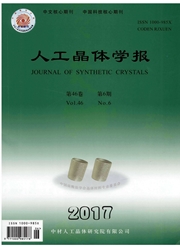

 中文摘要:
中文摘要:
2004年以来,石墨烯因其优异的光学、电学性质而被广泛地研究,但由于其零带隙的特性极大地限制了它的应用前景。单层的VIB族过渡金属硫化物(TMDs)拥有类似石墨烯的晶体结构及可控的能带结构,是一类理想的二维直接带隙半导体材料,不仅可用于探索如谷极化等一些基础和前沿的物理问题,也可以广泛应用于纳米器件、光电子学和光催化的研究。近年来,化学气相沉积(CVD)技术作为一种相较于传统化学合成或物理剥离更加有效的制备方法被引入此类材料的生长,能够合成出拥有大面积连续的、厚薄均匀和较高晶体质量的单层TMDs。基于此,重点介绍了利用CVD技术生长单层TMDs所取得的进展,讨论了各工艺条件(如反应温度、载流气体、衬底、前驱物与衬底之间的距离等)对单层TMDs的生长及性质的影响。最后,探讨了利用CVD技术实现调控单层TMDs的尺寸、覆盖度和层厚均匀性的途径和方法。
 英文摘要:
英文摘要:
Since 2004, graphene have been under extensive investigation due to its excellent optical and electrical properties. But its applications were limited greatly because of the characteristics of the zero band gap. Monolayer VIB transition metal sulfide (TMDs) is a class of ideal two-dimensional direct band gap semiconductor, which has crystal structure analogues of graphene and controllable band structure. TMDs not only can be used to explore some other fundamental and advanced physical issues such as valley polarization, but also can be widely used in nanodevices, optoelectronics and photocatalysis. In recent years, chemical vapor deposition (CVD) technology is a more effective method to grow TMDs compared to traditional chemical synthesis or physical exfoliation. CVD can be used to synthesize a large area of continuous, uniform thickness and high crystal quality monolayer TMDs. Therefore, this review focuses on the recent progress of monolayer TMDs CVD growth technology. The influence of process parameters, such as the reaction temperature, the composition of carrier gas, the variable substrate and the precursor-substrate distance, to the growth and properties of monolayer TMDs were discussed also. Finally, it also prospects some available ways for realizing the control of the monolayer TMDs size, the
 同期刊论文项目
同期刊论文项目
 同项目期刊论文
同项目期刊论文
 期刊信息
期刊信息
